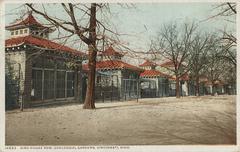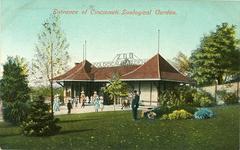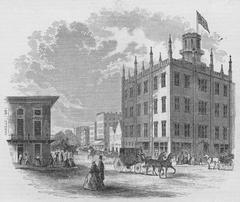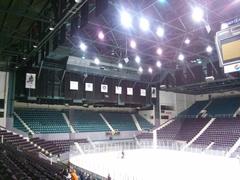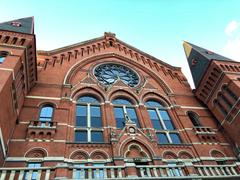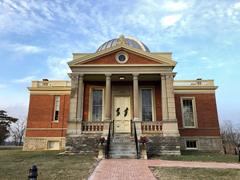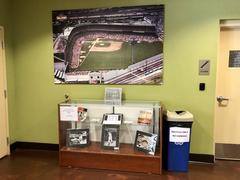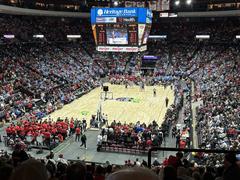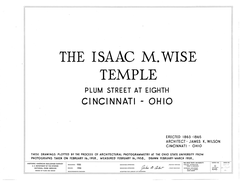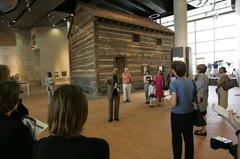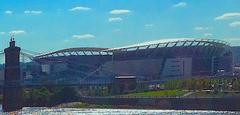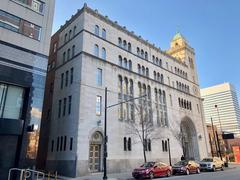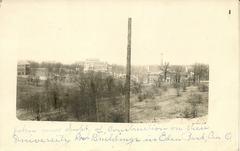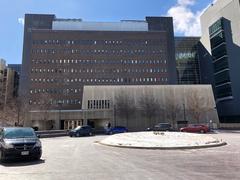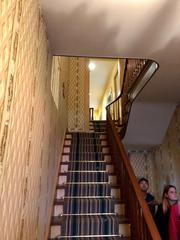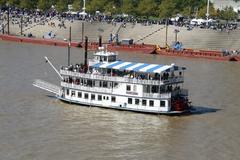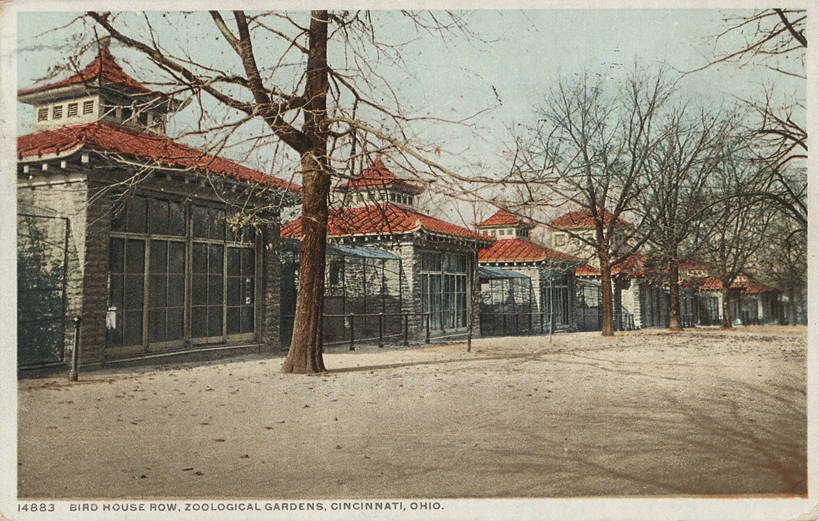
Cincinnati Zoo and Botanical Garden: Comprehensive Visiting Hours, Tickets, and Travel Guide
Date: 14/06/2025
Introduction
The Cincinnati Zoo & Botanical Garden stands as a historic and innovative leader among American zoological institutions. Established in 1875, it is the second oldest zoo in the United States, renowned for its naturalistic animal habitats, expansive botanical gardens, and groundbreaking conservation achievements. As the “Greenest Zoo in America®,” it is also a model for sustainability and community engagement. This detailed guide provides up-to-date information on visiting hours, tickets, accessibility, conservation initiatives, and travel tips to help you plan a memorable visit to one of Cincinnati’s most treasured attractions. For the latest details, always refer to the official Cincinnati Zoo website.
Table of Contents
- Introduction
- Visiting Hours and Tickets
- Getting There and Nearby Attractions
- Special Events and Guided Tours
- Historical Overview
- Conservation Leadership
- Major Attractions and Visitor Experience
- Accessibility, Sustainability, and Community Engagement
- Frequently Asked Questions
- Conclusion and Final Tips
- References
Cincinnati Zoo Visiting Hours and Tickets
- General Hours: Open daily from 10:00 AM to 5:00 PM. Seasonal variations and extended hours occur during special events like the Festival of Lights. Confirm current hours on the official website.
- Ticket Prices:
- Adults (ages 10+): $17–$25
- Children (ages 2–9): $12–$17
- Seniors (65+): $15–$20
- Children under 2: Free
- Discounts: Available for military, first responders, SNAP/EBT cardholders, and members of reciprocal zoos.
- Memberships: Offer unlimited access, free parking, and exclusive perks.
- Purchase: Buy tickets online in advance for the best price and to skip lines.
Getting There and Nearby Attractions
- Address: 3400 Vine Street, Cincinnati, OH 45220
- Parking: On-site parking is available for $10, payable by card or QR code. Members park free. The solar canopy shades 800 spaces.
- Public Transit: Metro bus lines serve the zoo, and designated rideshare drop-off points are available.
- Nearby Attractions:
- Cincinnati Art Museum
- Eden Park
- Findlay Market
- Over-the-Rhine Historic District
- Smale Riverfront Park
- Cincinnati Museum Center at Union Terminal
Special Events and Guided Tours
- Festival of Lights: An annual winter tradition with millions of LED lights and themed displays.
- Zoo La La & Zoo Brew: Fundraising and craft beer events with entertainment and exclusive access.
- Breakfast with the Animals: Morning experiences with zookeepers and animal ambassadors.
- Guided Tours: Behind-the-scenes tours, including the CREW and Go-Green Sustainability Tours, offer insights into animal care, research, and sustainability efforts.
- Sensory-Friendly Events: Including Sensory-Friendly Santa and other inclusive programming for guests with special needs.
Historical Overview
Founding and Early Years (1875–1917)
The zoo opened on September 18, 1875, on 67 acres in what was once Blakely’s Woods. Founded by Andrew Erkenbrecher, it modeled German zoological gardens by combining animal exhibits with lush botanical collections. Early years saw financial struggles, but public support enabled growth.
Growth and Innovation (1917–1932)
The Cincinnati Zoological Park Association, backed by philanthropists, took over management in 1917, introducing naturalistic, bar-less enclosures and enhancing animal welfare. From 1930 to 1973, the zoo also hosted the Cincinnati Opera, merging culture and wildlife.
Municipal Ownership and Expansion (1932–1980s)
Cincinnati assumed ownership in 1932, securing the zoo’s future and enabling further expansion, including the Mast Farm breeding facility. The zoo has played a pivotal role in breeding endangered species and commemorates wildlife history with landmarks like the Martha and Incas memorials.
Architectural and Historical Landmarks
The Elephant House and Reptile House, both designated National Historic Landmarks, are among the oldest zoo structures in the U.S., designed by James W. McLaughlin. The Reptile House remains operational in its original function.
Conservation Leadership
Carl H. Lindner Jr. Family Center for Conservation and Research of Endangered Wildlife (CREW)
CREW is a world-leading center for reproductive science, genetics, and fieldwork, addressing challenges that face endangered animals and plants. It supports both in situ and ex situ conservation, offers educational tours, and enables visitors to witness conservation science in action (CREW).
Notable Conservation Achievements
- Sumatran Rhino Breeding: First successful captive births in over a century, contributing vital genetic diversity (CREW Conservation).
- Manatee Springs: Award-winning exhibit for aquatic conservation and rehabilitation of injured manatees (Manatee Springs Awards).
- Gorilla World: Naturalistic habitat supporting breeding and care of western lowland gorillas (Gorilla World).
- White Lion Cubs: Successful breeding of rare white lions (White Lion Cubs).
- Red Panda Habitat: Woodland landscape supporting conservation and education (Red Panda Habitat).
- Dobsa Giraffe Ridge: New exhibit supporting giraffe conservation (Dobsa Giraffe Ridge).
Barrows Conservation Lecture Series
Since 1993, this series has brought global conservation leaders to Cincinnati, fostering public engagement and honoring outstanding conservationists (Barrows Conservation Series).
Sustainability and Green Initiatives
- Net-Zero by 2025: Targeting net-zero energy, water, and waste (Cincinnati Zoo Sustainability).
- Solar Power: 2.8 MW solar carport—the largest urban solar array in the U.S.—provides two-thirds of the zoo’s energy, reducing CO₂ emissions by 1,775 tons annually (Environment + Energy Leader).
- Waste and Water Management: Stormwater capture and composting programs support both plant and animal health (Spectrum News).
- Community Solar Program: Supports local schools and community centers with solar energy.
Botanical Conservation
With more than 3,000 plant species, the gardens have earned top national recognition (Botanical Garden Recognition). The collection supports pollinator health, rare plant preservation, and visitor education.
Major Attractions and Visitor Experience
Iconic Animal Habitats
- African Savanna: Home to lions, giraffes, zebras, and cheetahs in open habitats.
- Gorilla World: Immersive gorilla experience with naturalistic environments.
- Hippo Cove: See Fiona, the famous Nile hippo, in underwater viewing areas.
- Cat Canyon: Features big cats like Malayan tigers and snow leopards.
- Night Hunters: Nocturnal species including clouded leopards and vampire bats.
- Wings of the World: Aviary with hundreds of bird species.
- Reptile House: Historic home to Komodo dragons, snakes, and turtles.
- Insect World: Interactive insect exhibits.
Botanical Gardens
- Butterfly Garden: Native pollinators and blooming plants.
- Rose Garden: Hundreds of rose varieties.
- Edible Garden: Sustainable gardening demonstrations.
- Seasonal Displays: Tulips in spring, vibrant autumn foliage.
New and Upcoming Exhibits
- North America Habitat: Includes Bear Ridge and Sea Otter Coast, opening for the 150th anniversary (Anniversary Projects).
- Siamang Point: Expansive habitat for siamangs, enhancing primate care.
Visitor Amenities
- Accessibility: Wheelchair-friendly paths, accessible restrooms, stroller rentals, and assistive listening devices. Service animals are welcome.
- Dining: Options for various dietary needs, including vegetarian and allergy-friendly meals.
- Gift Shops: Zoo-themed goods and local artisan products.
- Rest Areas: Shaded picnic spots throughout the grounds.
Accessibility, Sustainability, and Community Engagement
Accessibility Initiatives
- Physical Accessibility: ADA-compliant paths, wheelchair and stroller rentals, gender-neutral and sensory-friendly restrooms.
- Developmental Accessibility: Social narratives, visual guides, and staff training support guests with sensory and developmental needs (Zoo Access for All).
- Economic Accessibility: “Zoo Access for All” program offers reduced rates and inclusive membership benefits.
Sustainability Leadership
- Energy: Solar canopy and net-zero energy commitment (Cincinnati Zoo Sustainability).
- Water: Stormwater capture and reuse.
- Waste: Composting and recycling divert over 90% of waste.
- Community Solar: Providing renewable energy to local organizations.
Community Engagement
- Education: High school and master’s programs, partnerships with Cincinnati schools, and public workshops (Blooloop).
- Economic Impact: $143 million regional economic impact, supported by 1.8 million annual visitors (Cincinnati Magazine).
- Urban Stewardship: Integration of conservation in urban planning and public outreach (Spectrum News).
Frequently Asked Questions
Q: What are the Cincinnati Zoo visiting hours?
A: Generally 10:00 AM to 5:00 PM, with possible seasonal adjustments and extended hours during special events.
Q: How much are tickets?
A: Prices range with age and membership; discounts available for qualifying groups. Buy online for best rates.
Q: Is the zoo accessible?
A: Yes—ADA-compliant paths, wheelchair rentals, and inclusive restrooms are available.
Q: Are pets allowed?
A: Only service animals are permitted.
Q: What are the zoo’s sustainability efforts?
A: The zoo targets net-zero energy, water, and waste by 2025 and operates the largest urban solar array in the U.S.
Conclusion and Final Tips
The Cincinnati Zoo & Botanical Garden offers a unique blend of historic charm, innovative conservation, and exceptional visitor amenities. Its leadership in animal care, research, and urban sustainability ensures a rich experience for guests of all ages and backgrounds. For a seamless visit:
- Purchase tickets online in advance.
- Arrive early to avoid peak crowds.
- Use digital maps and check the daily schedule for special events.
- Explore nearby Cincinnati attractions to enrich your trip.
- Support the zoo’s mission through memberships or donations.
To learn more, visit the official website, or explore behind-the-scenes experiences and sustainability initiatives (CREW, Sustainability).
References and Further Reading
- Cincinnati Zoo and Botanical Garden official website, 2025
- CREW - Carl H. Lindner Jr. Family Center for Conservation and Research of Endangered Wildlife, 2025
- Cincinnati Zoo Sustainability Initiatives, 2025
- Cincinnati Zoo 150th Anniversary Celebration, 2025
- Barrows Conservation Lecture Series, 2025
- Environment + Energy Leader, Article on Cincinnati Zoo Solar Carport, 2022
- Spectrum News, Cincinnati Zoo Conservation and Sustainability, 2022
- USA Today, Best Botanical Gardens Ranking, 2025
- Blooloop, Cincinnati Zoo Education Programs, 2023
- Cincinnati Magazine, Economic Impact of Cincinnati Zoo, 2024
